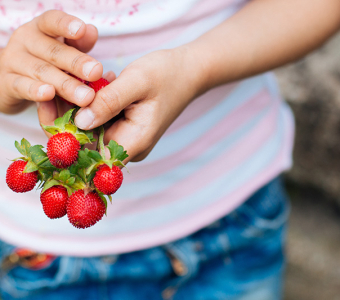Learn How To Care For Your Strawberries


The Fruit Season
The Time For All Things Strawberry
The mouth-watering juicy sweetness and deep red colour of strawberries can brighten up any meal: both the taste and the appeal. But not only do they taste amazing, strawberries are among the fruits and vegetables ranked highest for health-promoting antioxidants.
The Benefits Of Strawberries
If you’re not already crazy-mad for strawberries like we are, you should be. They are juicy, summery, delicious and a genuine, bona-fide superfood. Nutrient-rich and packed with antioxidants, strawberries offer a wide range of health benefits. Strawberries are rich in vitamin C, fibre, folic acid and potassium. Vitamin C boosts immunity and one cup of strawberries contains 100 mg of vitamin C: your entire daily requirement.
And those tiny seeds, of which there are about 200 located on the outside of each berry, provide soluble fibre to help lower cholesterol and keep everything working just fine. Strawberries also contain powerful ellagic acids and flavonoids that can counteract the effect of low-density lipoprotein, LDL or bad cholesterol, in the blood benefitting heart health. On top of all that, one cup of strawberries only has 55 calories so no need for calorie counting.
What’s not to love?
Keep Your Strawberries Fresher Longer
Strawberries are a very soft fruit and they can spoil quickly if they are not looked after carefully. If you haven’t gobbled all your strawberries up on the way home, it may be that you are supposed to save them to share with others, or you might want to save them for a special recipe. Either way, to get the best life out of your strawberries we suggest the following:
Leave Them Dry
Only wash strawberries immediately before eating them: if you wash the strawberries and then try and store them, they will soak up moisture and get mushy or even mouldy.
Leave The Stems On
Keep the stems in place as long as you can.
Remove The Ugly Ones
If you spot one berry that is not looking quite right, toss it so mould doesn’t spread.
Our Tips On
How To Store Strawberries
Waiting till Tomorrow? Put them in the fridge. If you don’t intend to eat your strawberries the day you get them home, the best place for them is in the vegie drawer in the refrigerator. It helps to maintain humidity and keep the berries from losing moisture and becoming dry. Leave them in their original container and store them unwashed with the stalks attached. They should last up to a week.
Eating them later? Put them in the freezer. If you don’t have plans to use the strawberries once you get them home and you can’t see yourself munching your way through them over the following week, your best option is to freeze them. Frozen strawberries are great for baking, for smoothies, yoghurt, ice creams, strawberry purées and you can freeze strawberries to make jam at any time.
How To Store Your Strawberries
Freezing
We understand it is tempting to just throw the strawberries into a freezer bag, which can be done. However, frozen this way, strawberries tend to freeze together into one solid brick. This can make things difficult when you need just a few cups for a smoothie or want the strawberries to fit nicely into a pie crust or trifle.
Can fresh strawberries be frozen without blanching? Yes, definitely. Putting the berries in boiling water for a few seconds will sterilize the berries, but it is not necessary.
How long will frozen strawberries keep? Once frozen, strawberries will normally keep for up to one year.
Are there other freezing methods? Yes, you can use a dry-sugar or a syrup pack method. Some people feel the dry-sugar pack gives good flavour and colour to sliced or crushed berries and a syrup pack gives leaves frozen berries plump and well-shaped after thawing. However, we prefer the simple, fresh approach.
Dry Sugar Pack
Halve, slice or crush the strawberries and place in a shallow pan. Sprinkle sugar over the berries using 1/3 to 3/4 cup of sugar for each kilogram of fruit. Gently turn the berries over and over until the sugar is thoroughly dissolved. Package and freeze.
Sweet Syrup Pack
Make a syrup using 250mls of water to each cup of sugar. Dissolve the sugar and chill. Place the whole or sliced berries in containers and cover with the cold syrup and freeze. Use about ½ to 1/3 cup of syrup for each 500ml container.
Unsweetened Syrup Pack
Pack whole, sliced or crushed berries in containers and cover with water or berry juice. For better colour retention, you can add ascorbic acid to the water, berry juice, or crushed berries. Cover berries with juice, package and freeze.
Strawberry Recipes
Looking for some great strawberry eating ideas? We have included some of our favourite recipes for drinks, nibbles and salads that all use strawberries. Healthy, tasty strawberry recipes that you, your family and guests are bound to love and demand again and again.
